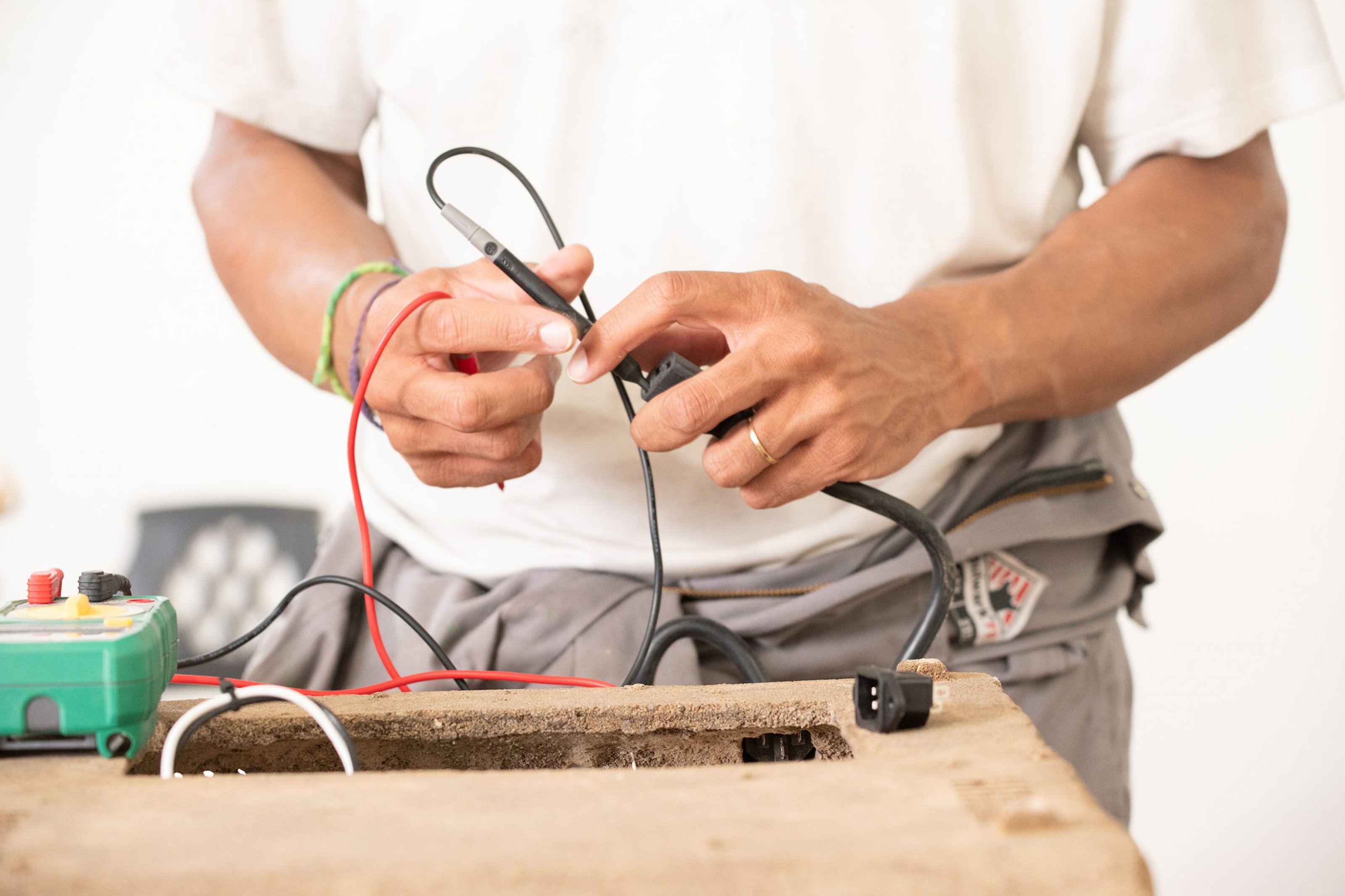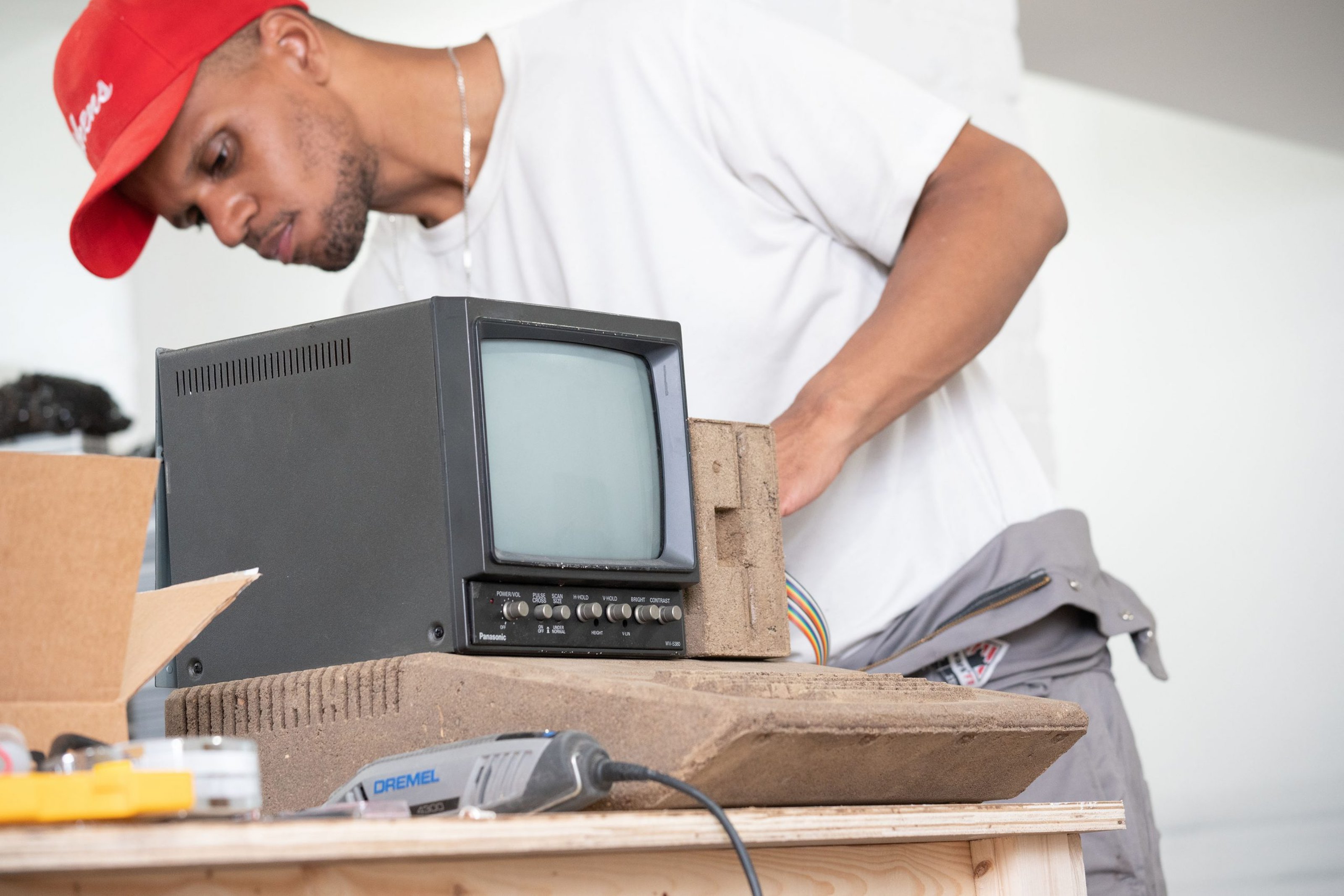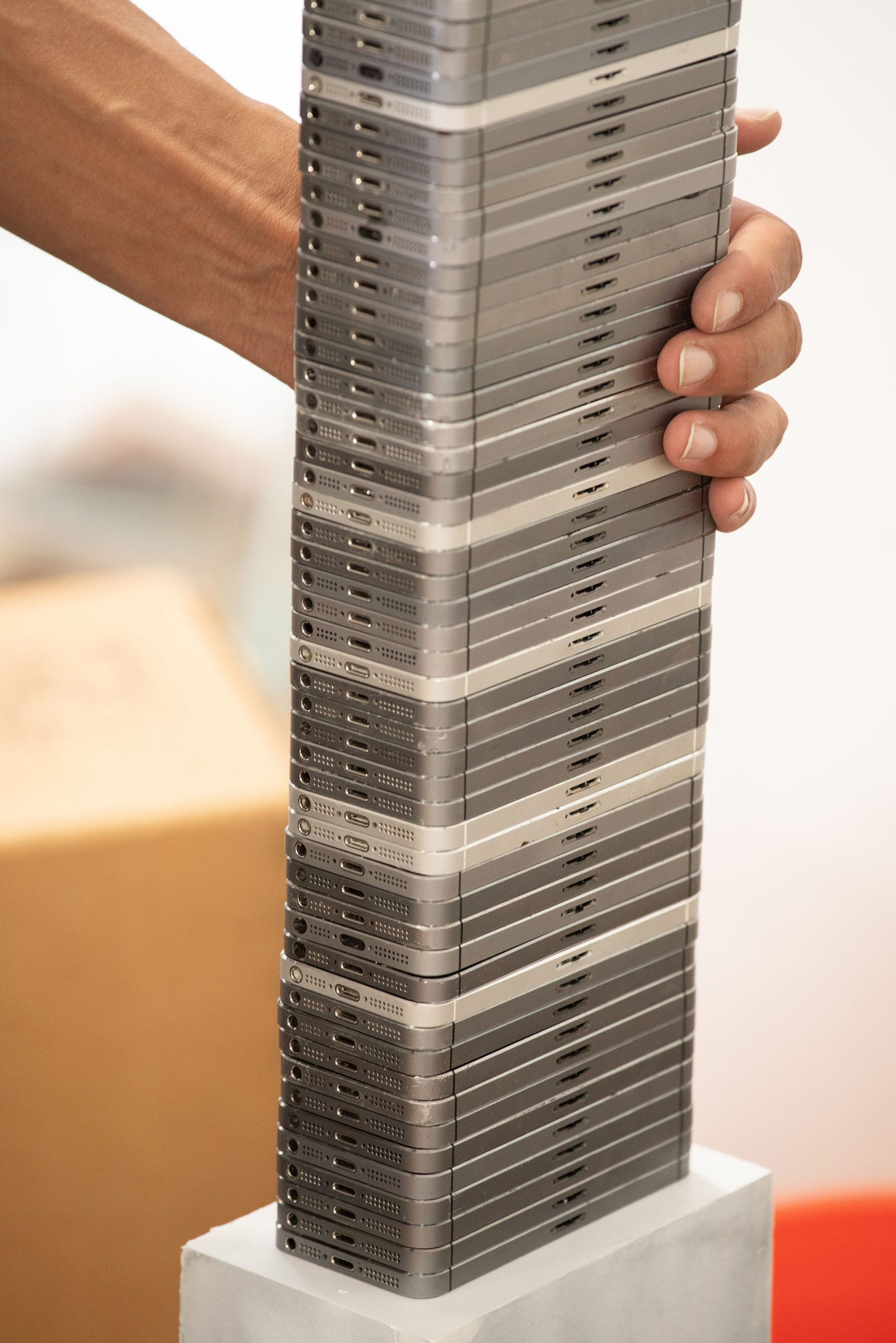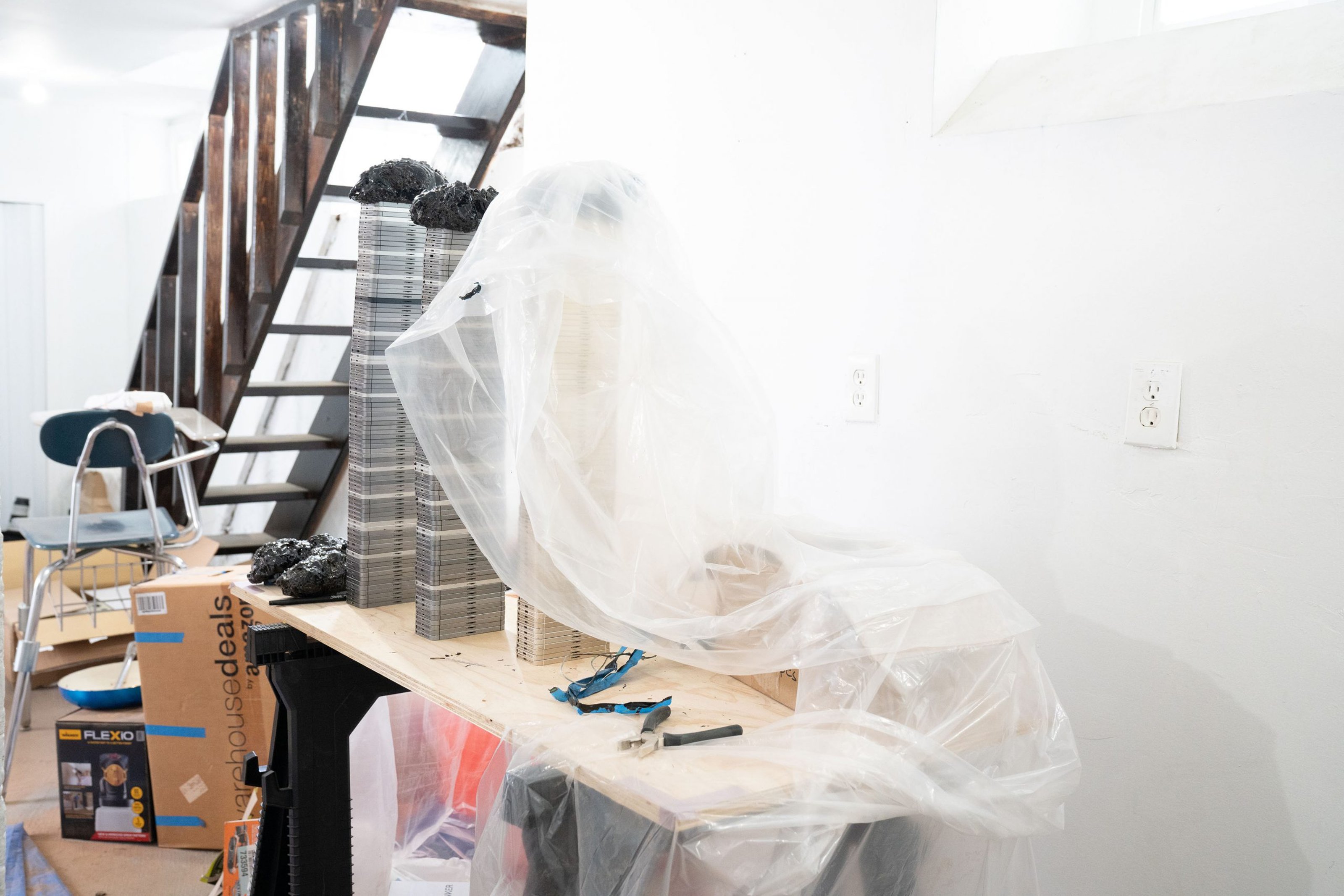The icy glare of a white screen has become a regular fixture of our lives since the advancement of the personal computer, up to the smart phones we use every day. Our relationship with technology has been inextricably linked with our own selves, our interpersonal relationships and our work; our creativity and output.
As these screens became so prominently connected with how and where we perceive the world around us, we have overlooked how they came to be, and what symbols they represent in a larger context. An abstracted interface will undoubtedly reflect the very concrete realities and histories of the creators that made it; and in American Artist’s latest exhibition with LABOR, Black Gooey Universe, the artist considers that the creation of these interfaces reveal the underlying history of racism and slavery in America, how black labor was omitted from the production of these interfaces through an investigation into the moment of when Silicon Valley programmers made the switch from a black screen to white screen in graphic user interface design.

Using a variety of media ranging from sculpture, software and video, American Artist’s works often deal with the intersection of technology, blackness, and networks of information in between. Since their official name change in 2013 to American Artist, they have alluded to questions on identity in a digital age; and with works like I’m Blue (If I Was █████ I Would Die), Sandy AI, Looted and Ally AI, with Rashida Richardson, they have put a spotlight on issues on race within the United States, within the context of the Black Lives Matter movement.
In our interview for the exhibition Black Gooey Universe, showing at LABOR on September 10th – November 6th, 2021; Collecteurs talks to American Artist about the advancement of the GUI and what a Black Gooey Universe would entail.

Collecteurs (C): Could you walk us through your decision to change your name officially to American Artist?
American Artist (AA): Many people ask why I don’t use a moniker, why I’ve made this my real name. I’m quite shy and I could never stand behind a moniker. If you asked my real name I’d surrender it immediately. I made this name to stand for itself even when I’m not up for it. It’s a bit like taping the light switch on.
Some people ask me what makes me an American Artist. My ancestors were slaves, natives and colonizers. My work looks crudely at the history of that. I don’t think it gets more American than what I’m doing.
C: What are some of the benefits and drawbacks of claiming this name? How does the identity of the artist relate to the work in your opinion?
AA: My name change isn’t an artwork necessarily. I changed it so that people see it in everyday situations and question it. But it interferes with my work. Only people that have known me for a long time can ignore it. When I changed my name some people told me I should stop there, that it is a work and it should be my only work. But unfortunately, that was only a starting point for me.


C: In your essay, Black Gooey Universe, you track the evolution of the graphic user interface (the GUI) and the first Apple Lisa computer’s switch from a black screen to a white screen as an emblem of racial inequality, of erasure of Black labor in capitalist white America. You claim that this erasure is so embedded in US politics and society that we come across it on a daily basis on every action and interaction, which now so often happens virtually, on our devices. This interface that has become the global standard has been rendered almost invisible and commonplace that we have ceased to question our relationship to it. What are some of the most immediate consequences of this switch in graphic interface that you have come across?
AA: The way in which whiteness has been positioned as “neutral” or aesthetically superior doesn’t originate within the computer screen, but it has certainly been exacerbated by it. Particularly through the global circulation of computer devices. Everyone across the world uses what is essentially a digital representation of the white man’s office space to interact with one another. In addition to modeling new documents after blank sheets of white office paper, the formal language of the office space that is used in computer applications assumes capitalist productivity as the basis of our virtual lives. As a computer user it feels very natural and benign to use these tools, but I believe their subtext is important to consider. Apple created an empire by marketing their devices as aesthetically superior. And fittingly, this marketing began with the white backdrop of the Apple Lisa. The subtext of these early industry decisions are that whiteness is aesthetically superior.
C: Another important distinction that you draw in your essay is the creation of the “user/programmer dichotomy;” where the programmer sets up the terms of use and the user consumes the product without much input or questioning. As we know, usually the “programmer” will be someone from a historically privileged position–namely white, cisgendered male–and the user has to comply with these rules that they have put forward, whether it fits their reality entirely or not. How do you see this dichotomy being broken? Are there any examples in your mind that transgress these roles?
AA: Even though this dichotomy feels very literal, it is also merely semantic. Neither a programmer or a user deals with the machine. They both only use symbolic language. There is more similarity in how they operate a computer than there is difference. For this reason all users can be considered programmers and vice versa. However, you are right that those people traditionally understood as programmers are primarily white cisgendered men. This is something that has to be challenged at every level of computer science and the field of science in general, beyond merely including people that identify by different genders or ethnicities. Former Google AI Ethicist Timnit Gebru intended to make transparent the ethical problems of big data, and for this she was silenced and removed. But actions like hers are the only ones that might change anything.
C: In order to provide an alternative to the white space as “neutral” and “full of potential,” you bring forward the Black Gooey. Quoting from your essay; “black gooey [is] antithetical to the values of the white screen. Black gooey might then be a platform of slowness (“dragged time”, “colored time”), refusal, thought, complexity, critique, softness, loudness, transparency, uselessness, and brokenness.” What are the benefits of staying in a place of perpetual brokenness? Is this a space removed from the productivity vortex of capitalism? Do you see yourself embracing that in your artistic practice, and if so in what ways?
AA: It is very much an anti-capitalist mindset. I wanted to use the idea of the very early computer monitor which has a black interface to think of an alternative to the values that drive today’s computer industry. And how could it work in opposition to the values that we’ve become accustomed to? One of these defining principles is brokenness. We are constantly reminded of how the machines we invest in are antiquated and obsolete, so what is the value of remaining in that obsolescence, and harnessing it as a position of power rather than of submission? I am also drawing on the history of Black radicalism in the essay. Echoing writing like Amiri Baraka’s Technology & Ethos. Considering the history of Black Americans as property, an insistence on Black autonomy must necessarily be anti-capitalist. My proposition for Black Gooey follows this idea.

C: In a talk you have given for the KADIST Foundation, regarding Black Gooey Universe, you also mention that white screen is more energy consuming, a waste product of capitalism, whereas a black screen would consume less energy. How would, in that case, a Black Gooey Universe resolve our current relationship with the environment?
AA: What I wanted to show with this statement is that the ideas that drive white technology are inherently careless. Its values are a holdover of “manifest destiny” and the colonial motivations of United States settlers. There is a belief that anything should be sacrificed in the name of innovation. United States settlers disregarded millenia of Native American stewardship practices, destroying much of California in a very short time. And Silicon Valley was built right on top of it. This is what comes to mind when Mark Zuckerberg tells young technologists to “move fast and break things.” I want to point out the absurdity of it. Black Gooey may be entirely useless but at least it won’t destroy the planet.


C: In your sculptural works for Black Gooey Universe, there is more of a focus on the tactile quality of the hardware itself rather than a contemplation of the software, or reiterations of the interface. On “Mother of All Demos, 2018,” the black goo seeps from the computer keyboard, with two pairs of gloves covered in goo right next to it, suggesting current use. Is this how you would redefine our future relationship with our devices; a more organic form and a deeper relationship to the hardware, rather than interacting with the software? Or are these remnants of a corrupt system, now humanized and animated?
AA: I began this series of works while writing the essay and I found it difficult to visualize an interface that was radically different from those of Apple or PC computers. Their interfaces are so integrated into our collective imagination that it is hard to picture an alternative that is not just the same designs with some exaggerated features. It was more generative to use the machine forms to experiment with the ideas of slowness and brokenness, or organic materials and morphology. As far as where I see our relationship with technology going, I wanted to challenge the distinction between hardware and software. As Friedrich Kittler has argued, it doesn’t really exist.
End.